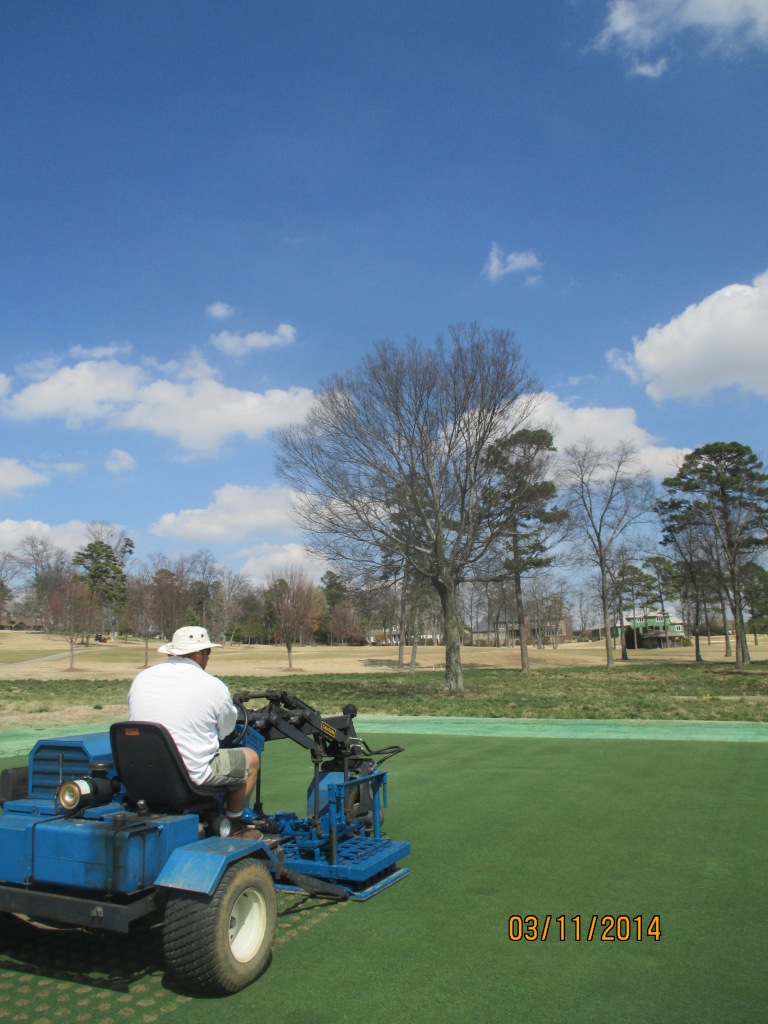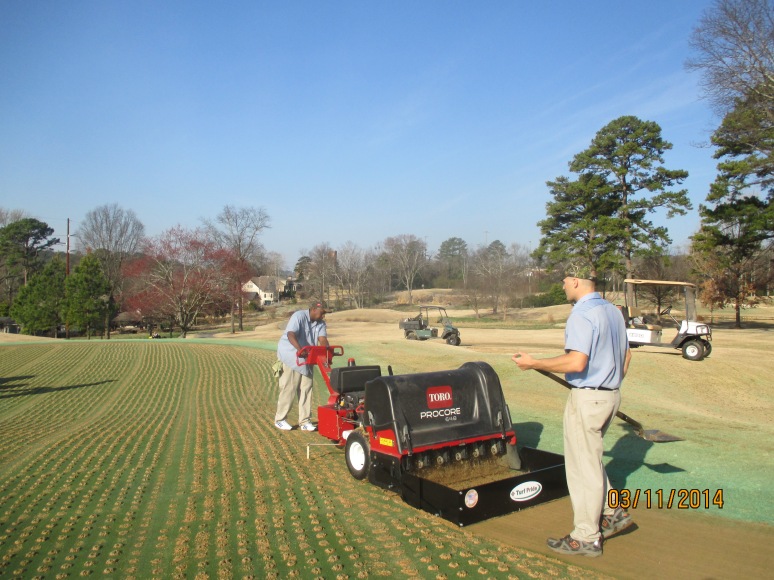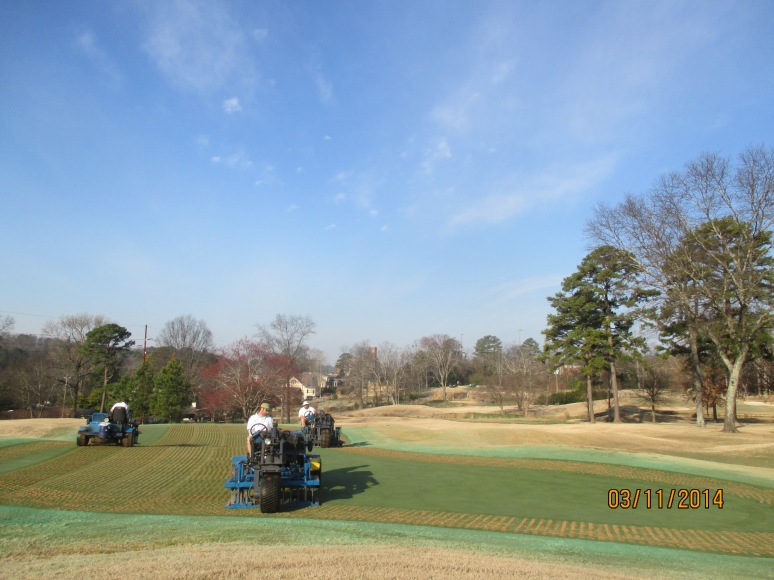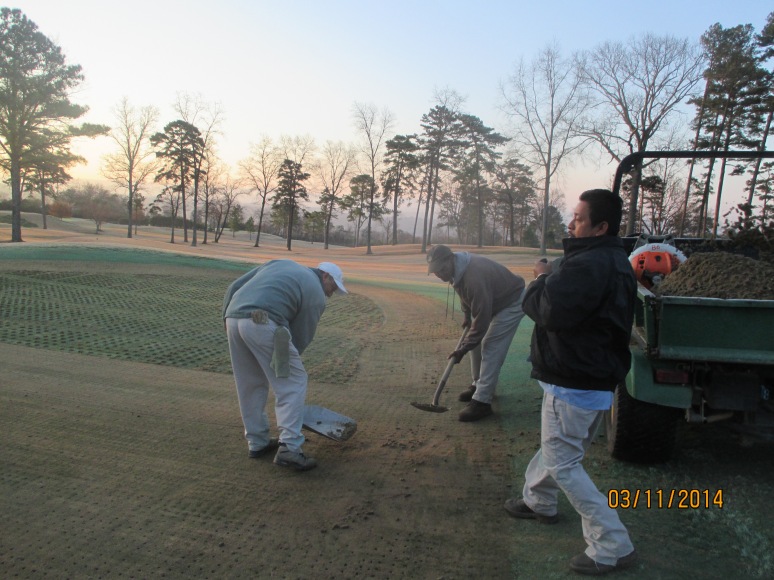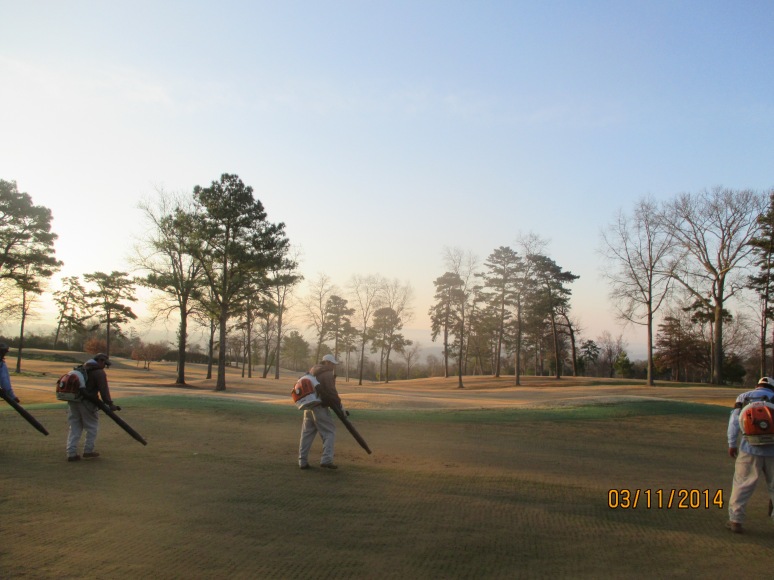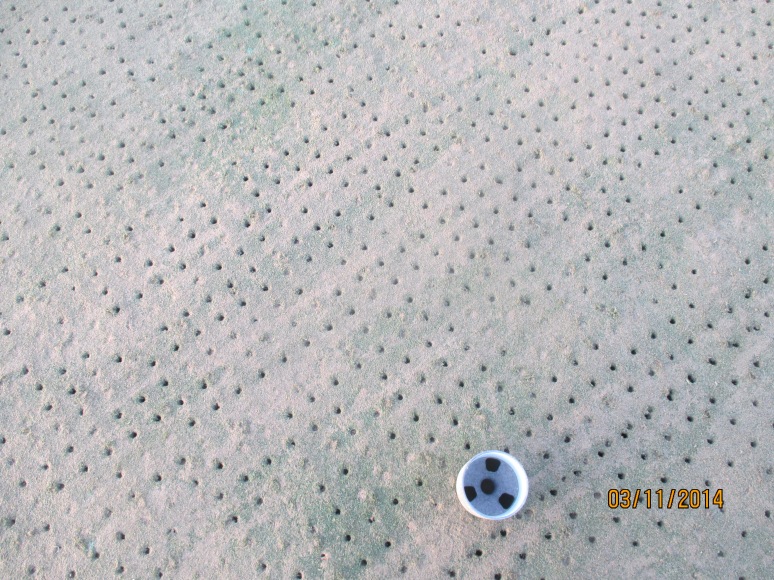Last year we installed 3 "trial" bunkers using the Better Billy Bunker method as well an additional bunker using another new technology of bunker liners. Our goal was to see how they performed so that when we undertake our course renovation we will have a good understanding of how these technologies work on our property.
You can see the post from last year by clicking
here
From a dollars and cents point of view, we spent approximately $1,704 in just labor from the one storm this past Monday (doesn't include fuel costs). The part that isn't figured into that is the fact that now all of the new sand we recently added to the bunkers is completely contaminated with native soil and rocks. This native soil is a primary reason why our bunkers are a constant point of conversation. When the bunker sand mixes with soil we have increased washing even in small rain events, fried egg lies, brown coloring, thin lies, etc.
Here are some pics from the massive rainfall we had this week. Again, our rain gauge measeures up to 6" and it was overflowing when we arrived to record it.
.JPG) |
| #9 green. This bunker did wash some. The design of the green directs water directly into the bunker though on both sides. Very poor drainage design that we have in many places on the course. |
.JPG) |
| #9 green. Even though the middle bunker did wash some the difference is that no mud washed down to mix in with the bunker sand. |
.JPG) |
| #9 green. Again this washout is due more to the green complex design. Also, with 6+ inches of rain we expect some washing. |
 |
| #15 green. Not the greastest picture for comparison but look in the background and notice that there is no washing of the other bunker. |
.JPG) |
| #18 green. The first bunker will take 1 person about 7 minutes to rake. The second bunker will take 3+ guys 30+ minutes to return it to playable conditions. |
 |
Another view of the bunker on #18 |
.JPG) |
| #6 green. We installed another new and promising liner system in this bunker last year as well. The washing is definitely better than no liner but it is still no comparison to the Better Billy Bunker Method. A lot of silt has mixed in with the sand. |
.JPG)
.JPG)
.JPG)

.JPG)


.JPG)
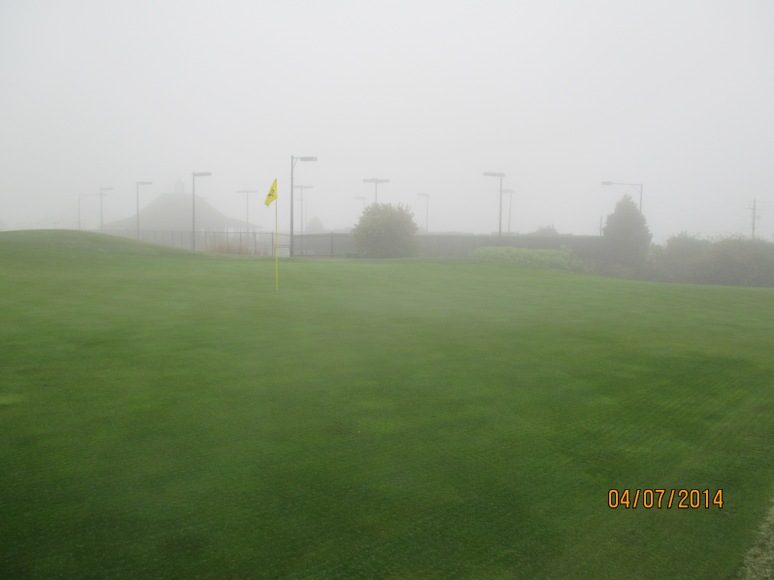
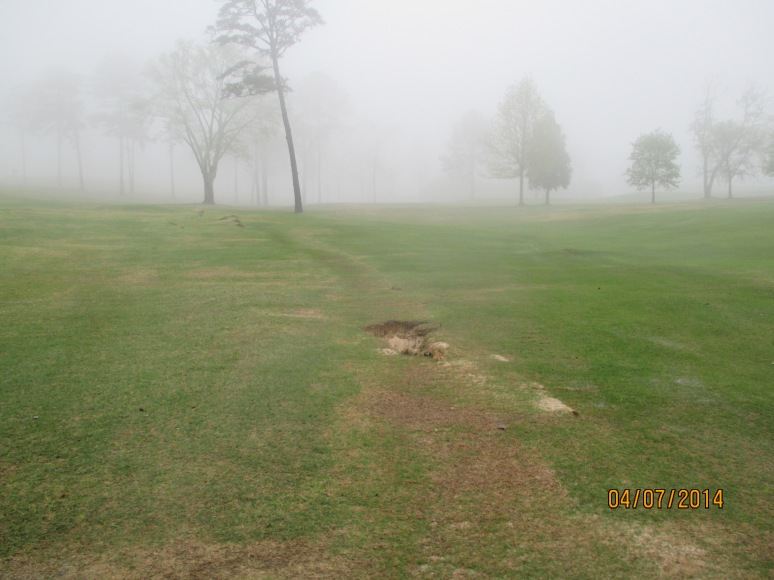
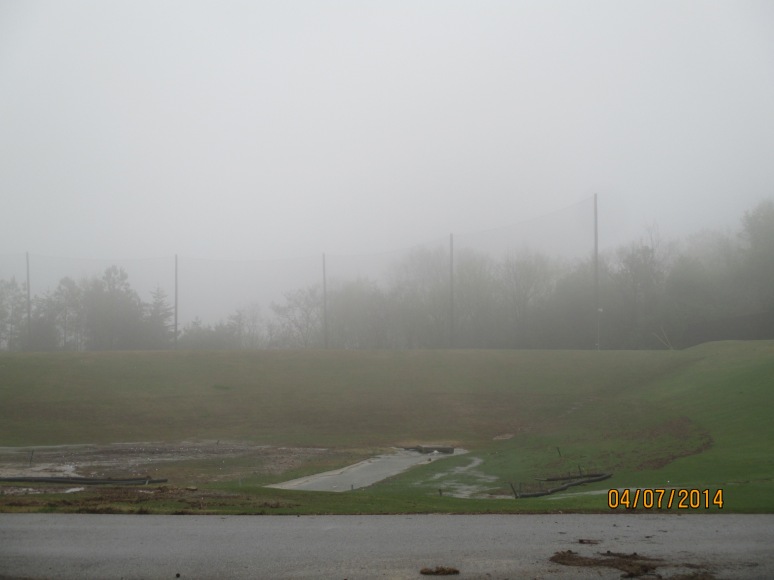
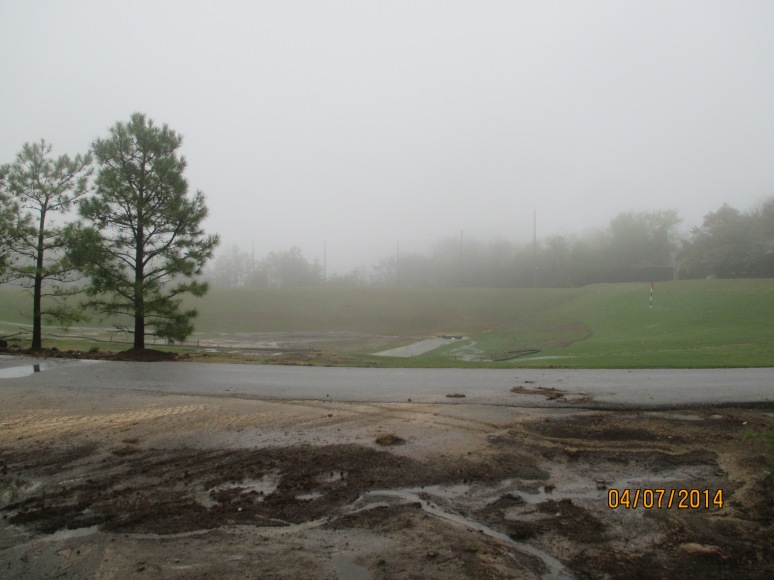
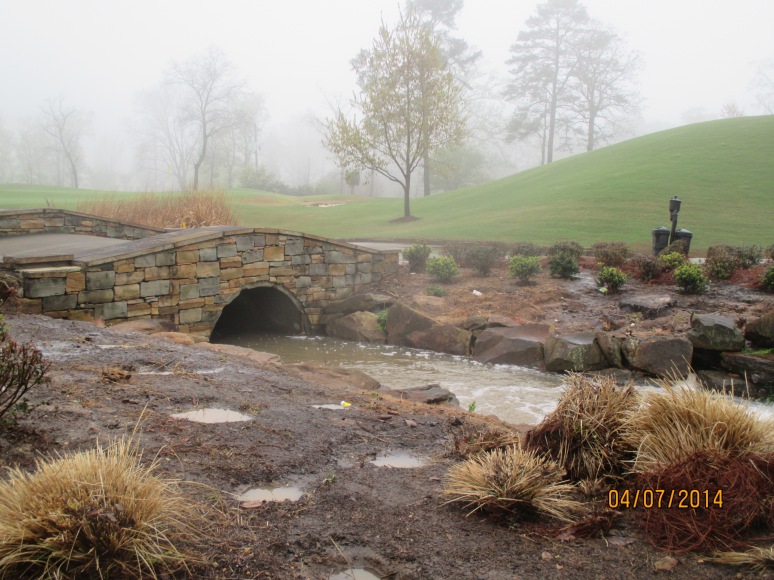
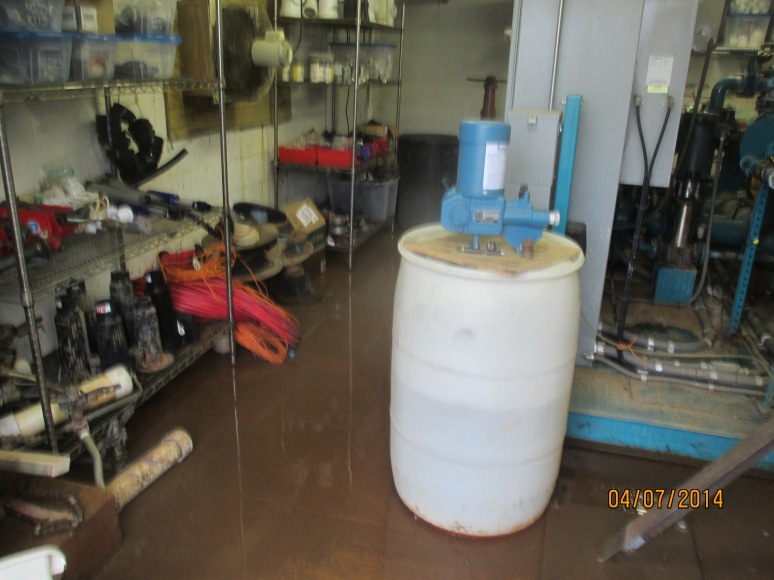
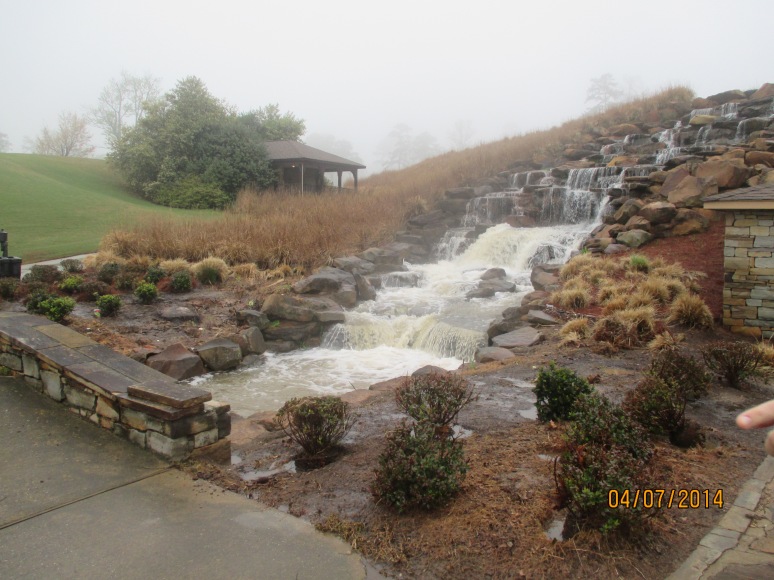






.JPG)


.JPG)
.JPG)




.JPG)



.JPG)
.JPG)

.JPG)

.JPG)
.JPG)

.JPG)


.jpg)

